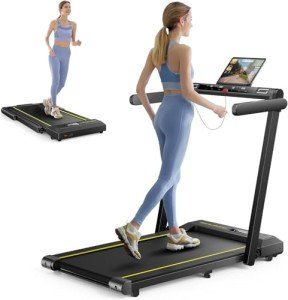The Ultimate Guide To Non Electric Treadmill

The Rise of Non-Electric Treadmills in the UK: A Sustainable Approach to Home Fitness
Recently, the fitness market has seen a significant shift towards sustainability and health-conscious lifestyles. With the rise of eco-friendly items, non-electric treadmills have gained significant popularity amongst physical fitness enthusiasts and casual users alike. These treadmills provide an unique blend of sustainability, efficiency, and affordability, making them an excellent option for those aiming to get fit without the large price tag of electricity-consuming devices. This short article will explore the features, benefits, and alternatives available in the UK market for non-electric treadmills.
Comprehending Non-Electric Treadmills
Non-electric treadmills, often described as manual or self-powered treadmills, operate without a source of power. Instead, they rely exclusively on the user's movement to drive the treadmill belt. They can be an excellent addition to home health clubs, especially for those looking to avoid high electricity costs or seeking to reduce their carbon footprint.
Types of Non-Electric Treadmills
There are a number of types of non-electric treadmills available in the market. Here's a succinct table that breaks down the main types you might encounter:
| Type | Description | Pros | Cons |
|---|---|---|---|
| Wood Treadmills | Made from premium wood, using a timeless visual. | Long lasting, aesthetic appeal | Heavier and can be more pricey |
| Steel Treadmills | Strong and robust, usually made from steel or strong metals. | Lasting, stable | Heavier, might have a higher carbon footprint |
| Foldable Treadmills | Easy to store and transport, typically with a lightweight frame. | Space-saving, portable | May compromise on stability and durability |
| Incline Treadmills | Offers integrated in incline functions for added intensity. | Great for varied exercises | Frequently heavier and pricier |
Secret Features of Non-Electric Treadmills
- User-Powered Movement: The most distinct feature is that they are powered straight by the user, using a natural running simulation.
- Adjustable Incline: Many models enable users to alter the incline by hand, supplying a more difficult workout.
- Space Efficiency: Treadmills can be created to fold or compact quickly for storage, matching homes with restricted space.
- Sturdiness: Non-electric treadmills are usually developed from robust products, promising a long life-span with regular usage.
Benefits of Non-Electric Treadmills
Non-electric treadmills featured numerous advantages that make them an attractive choice:
- Cost-Effective: By eliminating the requirement for an electric outlet, users can minimize electricity costs and use their machines anywhere.
- Sustainable Workout: These treadmills symbolize a greener approach to physical fitness, adding to a lower environmental effect.
- Natural Running Mechanics: The manual element engages core muscles more successfully and helps enhance flexibility and stability.
- Lower Maintenance Costs: Being mechanical, there is less that can go wrong compared to their electric equivalents, resulting in lowered upkeep requirements.
Factors to Consider When Choosing a Non-Electric Treadmill
While picking a non-electric treadmill, a potential purchaser should think about several factors:
- Weight Capacity: Ensure that the treadmill can accommodate the user's weight.
- Runner's Comfort: Look for functions like adjustable belt resistance and cushioning to improve comfort.
- Mobility: If area is a concern, go with a design that can be easily folded or transferred.
- Price Range: Establish a budget plan as prices can differ widely based upon products and functions.
Popular Models in the UK
The UK market provides a series of non-electric treadmills with numerous features and price points. Here are some well-regarded choices:
| Model | Price Range | Key Features | User Ratings |
|---|---|---|---|
| Fitness Reality TR3000i | ₤ 300 - ₤ 450 | High weight capacity, foldable, and manual incline | 4.5/ 5 |
| Kettler Track S | ₤ 400 - ₤ 600 | Adjustable incline, compact design | 4.6/ 5 |
| Smarter Fitness SMA7 in the house | ₤ 250 - ₤ 400 | Made from wood, aesthetic style, extremely tough | 4.4/ 5 |
| ProForm Performance 400i | ₤ 300 - ₤ 500 | Easy to use user interface, great build quality | 4.3/ 5 |
Regularly Asked Questions (FAQ)
Q1: Can I get an excellent exercise on a non-electric treadmill?
A1: Yes! Non-electric treadmills engage your muscles more than electric models due to their manual nature, offering an excellent cardiovascular exercise.
Q2: Are non-electric treadmills more cost effective than electric ones?
A2: Generally, they are more budget-friendly since they don't rely on electrical performance, causing less upkeep and operation costs.
Q3: How do I keep a non-electric treadmill?
A3: Maintenance is simple. Keep the treadmill clean, lubricate the belt if necessary, and regularly look for any loose bolts or parts.
Q4: What is the weight limit for non-electric treadmills?
A4: Most models support a weight range in between 100kg and 180kg. It is recommended to check private requirements.
Q5: Is running on a non-electric treadmill harder than on an electric one?
A5: It can be, as users should create all movement. However, this can cause better endurance and muscle engagement over time.
As the UK turns its focus towards sustainable living and much healthier way of lives, non-electric treadmills use a testament to this altering landscape. With their price and environment-friendly leanings, these machines represent a considerable shift in how individuals view fitness in the house. By considering Non Electric Treadmill and important factors laid out in this post, fitness enthusiasts can make informed choices that cater not only to their physical fitness requires but likewise to their environmental perfects.
Whether it's for casual walking or intense running, investing in a non-electric treadmill can be an action towards a healthier and more sustainable way of life.

